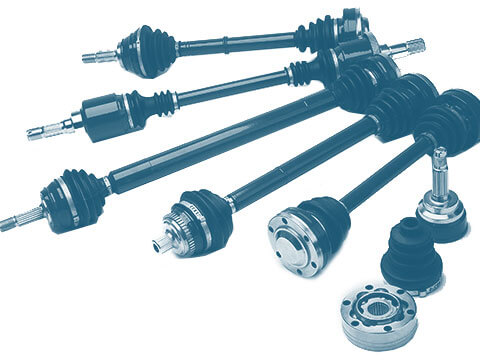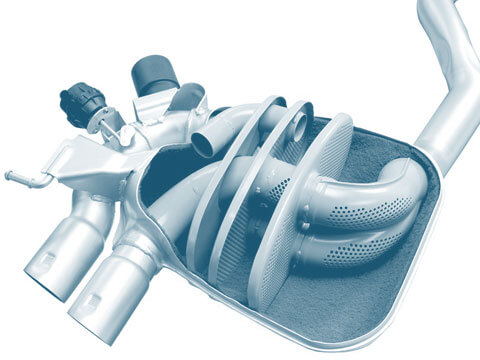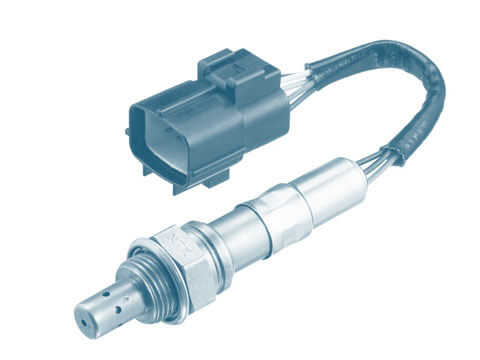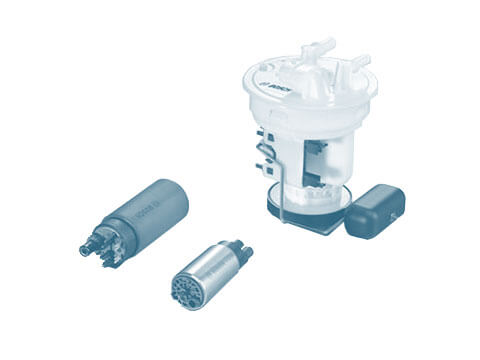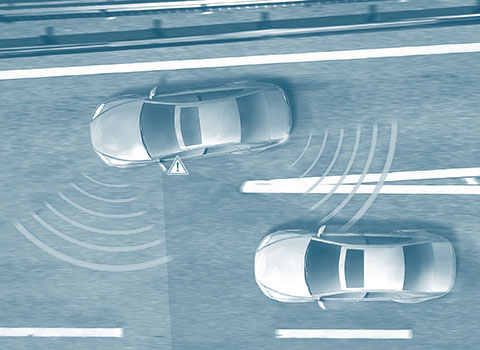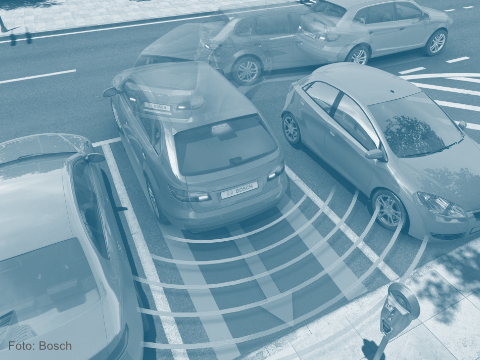Video sensor/camera sensor
The video sensor or camera sensor is used in passenger cars so that the driver can see important visual information about the vehicle surroundings.
Function
Video sensors, also referred to as camera sensors or image sensors, are image-based sensors. They provide the driver with important visual information about the vehicle surroundings.
Video sensors are different to standard cameras which show the driver (e.g. when manoeuvring backwards into a parking space) a passive image, but the driver has to assess and react to the situation themselves. Video sensors, on the other hand are more intelligent and make a fully automatic assessment of what can be seen on the image. This includes measuring distance and making objective assessments. As a result, assistance systems can recognise immanent collisions and carry out braking and steering manoeuvres themselves in order to prevent an accident. That is a crux of modern highly automated Emergency Brake Assist systems.
As additional functions, video sensors can evaluate road signs and recognise when the driver inadvertently veers out of lane, and perform corrective steering manoeuvres. Video sensors have an integrated computer to enable them to perform this complex form of image evaluation.
A special variant are infrared cameras. They can display a road on a screen and make it seem like broad daylight. They come in different variants: ones that just display passive images, and ones that evaluate images and recognise hazardous objects, so that the driver can be actively alerted to them.
Video sensors come as stereo or mono cameras:
- Stereo cameras consist of two lenses that fuse the content of the two images together and evaluate it. Thanks to their angular misalignment, they are particularly well-suited to detecting distance and obstacles.
- For cost reasons, the cameras used in most modern vehicles are mono cameras. The huge advancements in image evaluation have made it possible for mono cameras to achieve the quality of detection level that is required for fully automatic emergency braking and steering.
Safety
Many active and passive safety systems function on the basis of sensor information. Thanks to significant progress in the development of new sensors, there has been a constant increase in the capabilities of safety and driver assistance systems in recent years. Sensors thus have a key role to play in increasing safety on our roads.






